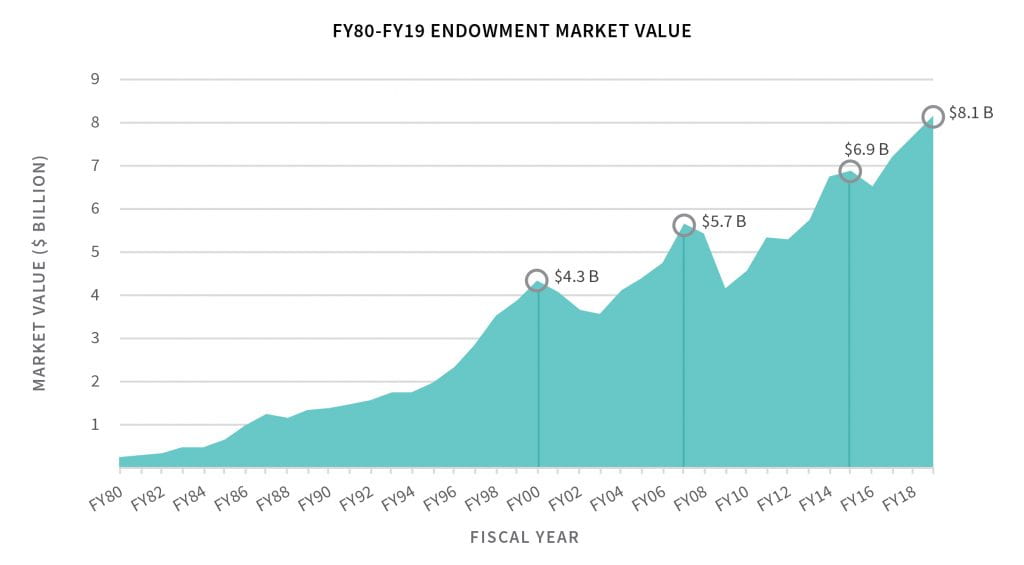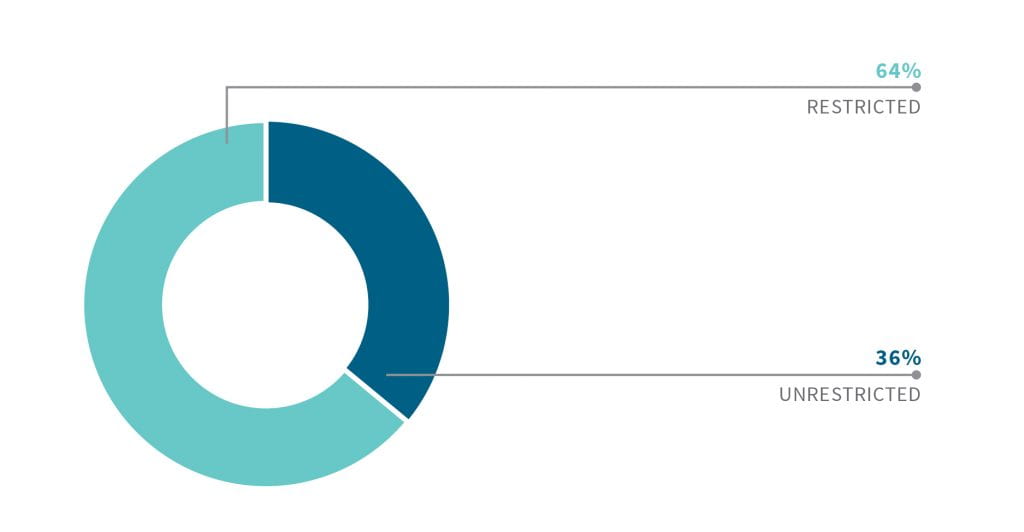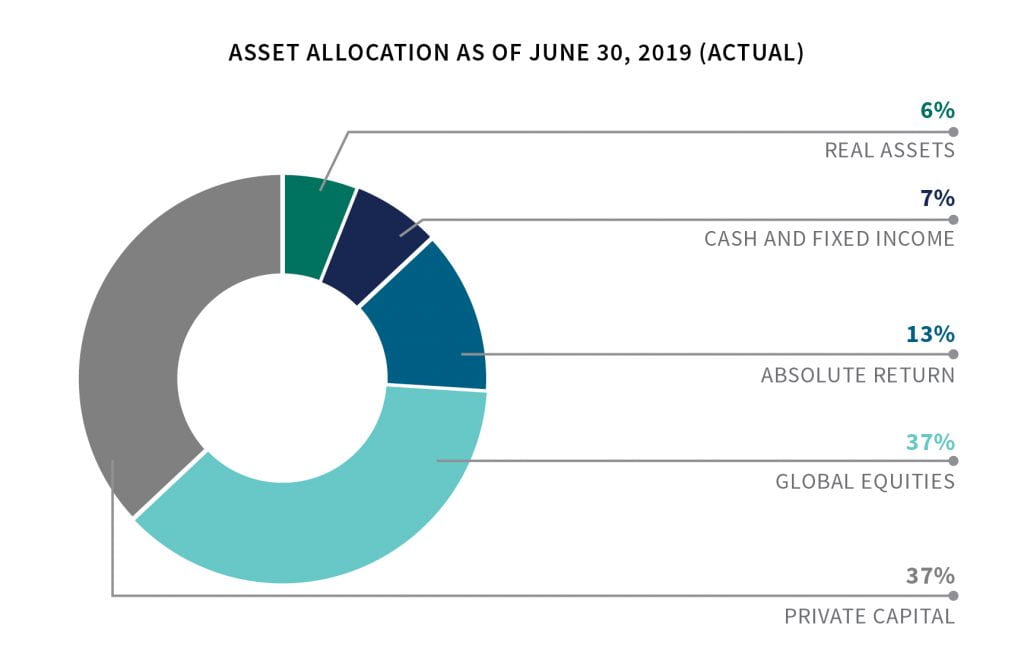A few weeks ago, I shared a broad overview of endowments: what they are, how they work, and a little bit about our own endowment at Washington University. Thank you for “investing” the time to read that post, and I hope it provides a nice transition into the second installment of “Endowment 101” — a look at the particular makeup of our endowment at Washington University and how it is managed.

Over the last 40 years and under the leadership of Chancellors Danforth and Wrighton, our endowment has grown leaps and bounds.
In that time, Washington University has developed a strong base of alumni and friends who understood the importance of the endowment and its potential role as a strategic engine in support of our mission to improve lives. Through the combination of their generosity and prudent stewardship of resources, we now have an $8.1 billion endowment, with which we’re able to do extraordinary things — fund research; pay for endowed faculty and staff positions across our schools and departments; provide scholarship support to students who come to us from various backgrounds and experiences; and give even more students opportunities in leadership, global learning, and career development. In fact, it’s nothing short of amazing how far we’ve come in the past four decades, thanks to the growth of our endowment and the generosity of our steadfast supporters.
As I mentioned in my last blog post, given our healthy endowment, some people assume we have an extra $8.1 billion lying around in a savings account somewhere. As that post elucidated, that’s simply not true. First, because we must manage the funds in order to meet both the current and future financial needs of the university. Second, while 36% of our endowment consists of unrestricted funds, the other 64% are restricted, which means we are limited in the ways we use those funds depending on the initial donor’s requests (Fun fact: the endowment is actually a pool of more than 3,600 individual funds).

So, we have restricted gifts, and we’ve outlined how those are earmarked for a specific purpose. But what about those unrestricted gifts? Can’t we just use those to fund anything we want? The answer is…no. Not really. Those funds often go to support university operations and current strategic initiatives, some of which are encumbered for long periods of time.

Even with any remaining assets, here at WashU, we have strict guidelines (such as our roughly 4.5% payout) that help us determine the best use of those funds as well as help us remain financially prudent and sustainable. In fact, these guidelines played a crucial role in allowing us to come out of the 2008 economic recession in strong financial health. On a related note, over time, we have remained diligent about diversifying our assets and discerning our risk profile. As a result, we have a dynamic portfolio with a high probability of achieving the university’s objectives based on historical returns and established portfolio practices.
 Now, a question we’re commonly asked is this: “Who actually manages our endowment and how do they determine how to invest its assets?”
Now, a question we’re commonly asked is this: “Who actually manages our endowment and how do they determine how to invest its assets?”
This is an important question for several reasons. Mostly because there is often a misconception that our Washington University administrative leadership — including me — have authority over endowment management and investment. In actuality, as Chancellor of the university, I have no authority to make investments, nor do I have voting power to influence decisionmaking. For as it states in Article II, Section 4, of the Bylaws of Washington University, “The Chancellor shall be the Chief Executive and Administrative Officer of the Corporation and, within policies and expenditures approved by the Board of Trustees, shall administer the educational program, business operations and affairs of the Corporation, but shall have no authority with respect to the investment of University funds.“
Rather, our endowment is solely managed through the work of the Washington University Investment Management Company (WUIMC).
What is WUIMC and how do they function?
Founded in 2006, WUIMC operates as its own business, a separate operating division within the legal framework of Washington University. Due to the desire to have higher levels of oversight, the university’s Board of Trustees delegated that oversight for the university’s investment policy and strategy to WUIMC’s board of directors. WUIMC’s board has six elected members; at present all are university trustees or trustees emeritus. In addition, our Washington University chair of the board of trustees and I, as Chancellor, sit on the board as ex officio members (though our chair can vote, I do not vote).
WUIMC is led by a chief investment officer and a team that consists of talented investment and operations professionals. At WashU, our goal is to work closely with WUIMC to ensure we abide by our endowment restrictions while also fulfilling WUIMC’s greatest responsibility — which is “to build and manage a perpetual portfolio to provide for today’s generation and preserve and grow the assets so that tomorrow’s students, faculty, and staff may continue to achieve the university’s mission of teaching, research, and patient care.” With this in mind, investments must generate a real return over the long term that maintains the purchasing power of the endowment after inflation, expenses, and payout.
Given the perpetual nature of the endowment (read…it should exist forever), WUIMC is able to operate under a long-term investment strategy. In other words, the company allocates assets based on a time horizon of years, not weeks or months. This allows WUIMC to think beyond the short term news/events and invest through economic cycles, rather than attempt to time the markets.
The company’s long-term investment horizon approach also helps inform its talent recruitment strategy. According to their investment principles: “The WUIMC team looks for external managers with this long-term investment orientation and whose framework broadly aligns with the university’s mission. The selection of external managers is based on a commitment to a repeatable investment process, investment skill and judgment, and intellectual honesty. We expect that our managers also weigh ethical considerations in each investment they make on behalf of the university.”
In summary, WUIMC is a separate entity accountable to its own board, but working in tandem with the university. Therefore, it has its own oversight and a lot of autonomy, but also a lot of rigidity in terms of the way it functions and allocates assets. Because its main purpose is to support the university’s mission in perpetuity, WUIMC’s investment decisions tend to align closely with our university’s most deeply held values. In the third installment of this blog series, I plan to dive more deeply and transparently into the ways in which those investments reflect our mission and the socially responsible investment guidelines that WUIMC has in place to further promote areas important to the university — areas such as equity, sustainability, education, entrepreneurship, public health, patient care, and more. More to come!
